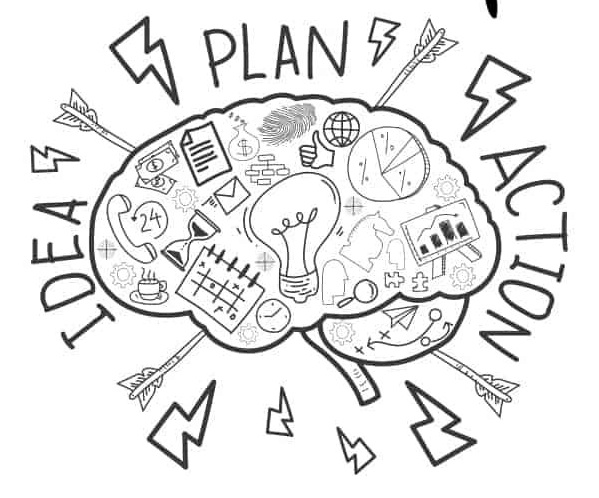Interpersonal spaces determine behaviour, communication and social interaction patterns. Knowledge of how much distance to maintain in different contexts facilitates healthy growth of individuals and society.
Kahlil Gibran’s often-quoted line, “Let there be spaces in our togetherness” is more than an admonition against intruding into personal affairs of others. A pun is intended in ‘spaces’. The great luminary meant to include here the physical distancing among people to ward off any malicious assault or a coronavirus-like disease.
The essentiality of physical spaces for health, good living and optimum growth of living beings has never been questioned. The spacing concept is based on the premise that imbued with enormous potential even an average person can flourish well and soar high enough only when assigned free space to use all one’s gears. Most people are known to use only one gear or two out of several, throughout their life span. Same principle holds good for the plant kingdom. Growth of plants is constricted when too close to each other. Witness the specific spaces between two consecutive plants of any crop in the farm.
Ever given a thought why people having made huge fortunes from their business in downtown, living in vicinity in shabby, dense multi-storied houses relocate to outskirts in the open spaces. For decades they were facing a space crunch to breathe, think and live freely!
Broadly, human beings follow a four-layered spacing system viz. intimate space (0-2 ft), personal space (2-4 ft), social space (4-12 ft) and public space (more than 12 ft). These ranges vary with communities, even within a community. People are embarrassed, uncomfortable, angry or apprehensive when their personal spaces are invaded. ‘Proxemics’ studies how spaces influence behavioural and communication patterns, social interactions and growth of individuals.
While close proximity may breed contempt, overmuch space, mental or physical tends to vitiate intimacies and relationships among human beings, so vital for healthy living. Everyone needs shoulders to bank upon, to share one’s ethos & pathos. Remaining unheard or unloved can be agonising and eventually traumatic. The issue of spaces being created among people, unawares or intentionally thereby impinging on the togetherness of human beings is not new. Over decades, tapering of family and personal ties, and non-sharing of feelings leading to alienation, mental sickness and associated complications has been an issue of intellectual debates, and also a recurring motif in literature and arts of all descriptions and communities. Poetic works of T.S. Eliot are testimony to the growing alienation of man and its implications like insensitivity to fellow beings. The lonesome nature of man has been attributed in part to the urbanisation, automation, and also attrition of human values like acceptance, appreciation, affection & love, loyalty, trust, empathy, etc. “Bigger the city, lonelier the man is”, said the 17th century essayist Lord Bacon.
The variegated rubric of family networks in Indian communities particularly among the Hindus is manifest in distinct names for each relationships, like with father’s and mother’s elder and younger brothers and sisters, spouse’s father and mother, their elder and younger brothers and sisters, and so on. There is also a code of etiquettes to be observed for each relationship like a married lady was forbidden not to share a seat contiguous to her husband’s elder brother. While showing the gravitas attached with others in extended family, this feature of Indian families strengthened one’s sense of belongingness, leaving little scope to fall apart in difficult moments. This is unlike in Western families where life is almost confined to one’s spouse and young ones.
“We are born alone, we live alone, we die alone.” Each person is an isolated, if not an insulated entity, in that the biochemical composition of each individual is unique, a remarkable feature that facilitates establishing biometric identities. Ditto for the individual’s mental frame; drawing from a vast array of permutations, the dominating thought in the individual psyche picks something that gradually shapes one’s mindset. Considering what we call mind-body chemistry, we align ourselves with people of particular ilk, and maintain distances accordingly.
The precept of distancing in Covid-19 era has widened the interpersonal gaps that had already set in due to excessive focus on one’s own shell in disregard of concern for others. It may be hard to regain the level of working relationships we had in pre-Corona era. Growing holistically and fully does not warrant insulating oneself from ethos and concerns of others. “Alone we can do so little; together we can do so much”, said Helen Keller. The power of collectivism and benefits of togetherness can be harnessed only in the spirit of sharing of thoughts, concerns and feelings. Inability to understand this has been at the root of much malaise that is spiritually and mentally enervates and gives rise to mental issues. The unwanted spaces need to be bridged, not created or widened.
It would be not only inhuman but also blasphemous and ungrateful to create spaces with those having been instrumental and supportive in our journey of life thus far. A mother, who does not cling the newborn by her breast or avoids hugging him throughout childhood even later, or consigns her 5-year baby to an exclusive room to study, play and sleep, most likely brings out an adult with little sensitivity and loyalty to family and nation. Understanding of how much space to maintain in different contexts helps one to lead a happy, blissful and meaningful life.
….. ….. ….. ….. ….. ….. ….. ….. ….. ….. ….. ….. ….. ….
The article first appeared in edit page of Orissa Post on 27 September 2020.





I really like and appreciate your post. Much thanks again.
Appreciate you sharing, great blog article. Really thank you! Will read on…
Greetings from Idaho! I love the info you provide here and can’t wait to take a look again when I get home. Superb site!
Great wordpress blog here. It’s hard to find quality writing like yours these days. I really appreciate people like you!
Excellent site. I’ll personally suggest reading this to my friends. I am confident they’ll be benefitted from this website.
Wow! Thank you! I continually needed to write on my website something like that. Can I include a fragment of your post to my blog?
Dear Sir, You are welcome to reproduce parts of my article(s) with acknowledgement (Source or Courtesy https://www.bluntspeaker.com).
Wonderful article! We will be linking to this particularly great post on our site. Keep up the good writing.
You provided viewers with an expert’s viewpoint on the subject.
Definitely, what a great blog and revealing posts, I definitely will bookmark your site. Best Regards!
My website: секс подростков
I got what you intend, and bookmarked it; very decent website.
Great post, very informative. I wonder why the other experts of this sector don’t notice this. You should continue your writing. I’m sure, you have a huge readers’ base already!
Very great post. I just stumbled upon your blog and wished to mention that I have really loved surfing around your weblog posts. After all I will be subscribing in your feed and I hope you write once more very soon!
I simply couldn’t leave your site before suggesting that I extremely loved the valuable information provided for visitors. I am going to other posts in this blog.
Very nice presentation. I definitely love this website; carry it on.
Heya i?m for the first time here. I found this board and I find It truly useful & it helped me out much. I hope to give something back and help others like you helped me.
Please read it if you really want to help.
I personally incur certain costs in maintaining my blog. Any sum, one time / occasionally / regularly shall be a big help. There is a Donate Now box to facilitate. I shall be grateful.
Hello! Would you mind if I share your blog with my zynga group? There’s a lot of people that I think would really enjoy your content. Please let me know. Thank you
You are welcome to share it. However, I shall appreciate if the link of the article or source (www.bluntspeaker.com) is properly acknowledged.
This article is a refreshing change! The author’s distinctive perspective and insightful analysis have made this a truly fascinating read. I’m appreciative the efforts, and thank the author for providing knowledge and sparking meaningful discussions through your brilliant writing!
I am extremely impressed with your writing skills as well as with the layout on your weblog. Is this a paid theme or did you modify it yourself? Either way keep up the nice quality writing, it is rare to see a great blog like this one nowadays..
I have been surfing online more than 3 hours nowadays, but I by no means discovered any fascinating article like yours. It?s lovely value enough for me. Personally, if all webmasters and bloggers made excellent content material as you probably did, the net will be a lot more helpful than ever before.
I convey my gratitude for your kind words. I do it without any material outcome, words of readers like you only make up.
Just desire to say your article is as surprising. The clarity in your post is just excellent and i can assume you are an expert on this subject. Well with your permission let me to grab your feed to keep updated with forthcoming post. Thanks a million and please carry on the rewarding work.
Thanks, dear Sir!
I am very happy to read this. This is the kind of manual that needs to be given and not the accidental misinformation that is at the other blogs. Appreciate your sharing this best doc.
Howdy! Would you mind if I share your blog with my facebook group? There’s a lot of people that I think would really appreciate your content. Please let me know. Many thanks
I shall appreciate my blog to be shared in your Facebook group. Please do it, and also mention your name in English, I shall be glad to see my blog in your Facebook.
Hi there! I simply wish to give an enormous thumbs up for the nice information you could have right here on this post. I will likely be coming again to your weblog for more soon.
Thanks that you found my post worth for revisiting.
Excellent post, very informative. I wish other specialists take note of it. You must proceed your writing. I’m confident, you’ve a huge readers’ base already!
great points altogether, you simply gained a new reader. What would you recommend about your post that you made a few days ago? Any positive?
whoah this weblog is great i really like studying your posts. Keep up the good paintings! You understand, a lot of persons are looking around for this info, you could aid them greatly.
Do you mind if I quote a couple of your articles as long as I provide credit and sources back to your webpage? My blog is in the very same niche as yours and my visitors would definitely benefit from a lot of the information you present here. Please let me know if this alright with you. Many thanks!
You are welcome.
Wonderful site. Plenty of helpful info here. I am sending it to a few friends ans additionally sharing in delicious. And of course, thanks for your effort!